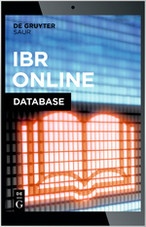- 12 Декабрь 2020
Информация о Статье/Публикации
Просмотров: 1506
ЗА ПРЕДЕЛАМИ ОНТОЛОГИИ: О ПЕРЕСМОТРЕ БЛАУШТАЙНОМ ЭСТЕТИКИ ИНГАРДЕНА
| Название на языке публикации: | BEYOND ONTOLOGY: ON BLAUSTEIN’S RECONSIDERATION OF INGARDEN’S AESTHETICS |
| Автор: | ВИТОЛЬД ПЛОТКА |
| Издание: |
HORIZON. Феноменологические исследования. Том 9, №2 (2020), 552-578 |
| Язык: | Английский |
| Тип публикации: | Статья |
| 10.21638/2226-5260-2020-9-2-552-578 | PDF (Загрузок: 2209) |
Аннотация
В статье рассматривается распространённое прочтение Ингардена, согласно которому его эстетическая теория обусловлена онтологией. В таком прочтении, во-первых, предполагается, что эстетика лишена автономии, и, во-вторых, что субъект эстетического опыта воспроизводим и пассивен. Автор статьи сосредотачивается на эстетике Ингардена, сформулированной им между 1925 и 1944 гг. Кроме того, в статье представлены отдельные элементы феноменологии эстетического опыта Ингардена, с помощью которых автор стремится продемонстрировать пересмотр эстетики Ингардена его студентом Блауштайном: теория последнего выходит за рамки онтологии. В частности, Блауштайн переосмысляет теорию Ингардена о чисто интенциональных объектах, интерпретируя её дескриптивно-психологическим, или феноменологическим, образом. Статья разделена на четыре части. В разделе 1 автор намечает исторические параллели между Ингарденом и Блауштайном. Раздел 2.1. посвящён феноменологическому подходу Ингардена к эстетическому опыту как многофазовой структуре. Исходя из этого, в разделе 2.2. следует остановиться на ранней теории интенциональных предметов Ингардена. Раздел 3 будет посвящён вкладу Блауштайна в феноменологию эстетического опыта. Учитывая тот факт, что Блауштайн формулирует собственную теорию в полемике с Ингарденом, в разделе 3.1. будет рассмотрена критическая оценка Блауштайном метода и эстетики Ингардена. Далее, в разделе 3.2., представлена исходная теория представлений Блауштайна и её применение в эстетике. Наконец, в разделе 4 автор перечисляет сходства и различия между эстетическими теориями Блауштайна и Ингардена
Ключевые слова
: эстетический опыт, дескриптивная психология, чисто интенциональный предмет, теория представлений, Ингарден, Блауштайн.
References
- Blaustein, L.(1928). Husserlowska nauka o akcie, treści i przedmiocie przedstawienia. Lvov: Nakładem Towarzystwa Naukowego z Zasiłkiem Ministerstwa Wyznań Religijnych i Oświecenia Publicznego.
- Blaustein, L.(1928–1929). Próba krytycznej oceny fenomenologii. Ruch Filozoficzny, 11, 164b–166b.
- Blaustein, L.(1930a). Ingarden Roman: Das literarische Kunstwerk. Eine Untersuchung aus dem Grenzgebiet der Ontologie, Logik und Literaturwissenschaft. Przegląd Humanistyczny, 5 (4), 452–454. Halle, Max Niemeyer Verlag.
- Blaustein, L.(1930b). Przedstawienia imaginatywne. Studyum z pogranicza psychologii i estetyki. Lvov: Wydawnictwo Polskiego Towarzystwa Filozoficznego we Lwowie.
- Blaustein, L.(1931a). O naoczności jako właściwości niektórych przedstawień. In Księga pamiątkowa Polskiego Towarzystwa Filozoficznego we Lwowie. 12 II 1904–12 II 1929 (120–142). Lvov: Polskie Towarzystwo Filozoficzne.
- Blaustein, L.(1931b). Przedstawienia schematyczne i symboliczne. Badania z pogranicza psychologji i estetyki. Lvov: Nakładem Przeglądu Humanistycznego.
- Blaustein, L.(1932). Roman Ingarden: Das literarische Kunstwerk. Eine Untersuchung aus dem Grenzgebiet der Ontologie, Logik und Literaturwissenschaft. Polskie Archiwum Psychologii, 5 (2–3), 346–349. Halle, Max Niemeyer Verlag.
- Blaustein, L.(1933). Przyczynki do psychologii widza kinowego. Poznań: Poznańskie Towarzystwo Psychologiczne.
- Blaustein, L.(1935–1937). Roman Ingarden. Das literarische Kunstwerk. Eine Untersuchung aus dem Grenzgebiet der Ontologie, Logik, und Literaturwissenschaft. Ruch Filozoficzny, 13 (5–10), 98a–102a. Halle, Max Niemeyer Verlag.
- Blaustein, L.(1936–1937). Wpływ wychowawczy filmu. Lvov: Skład Główny S.Malinowski.
- Blaustein, L.(1937). Rola percepcji w doznaniu estetycznym. Przegląd Filozoficzny, 40 (4), 399–408.
- Blaustein, L.(1938a). O ujmowaniu przedmiotów estetycznych. Lvov: Lwowska Biblioteka Pedagogiczna.
- Blaustein, L.(1938b). O percepcji słuchowiska radiowego. Warsaw: Polskie Radio Biuro Studiów.
- Blaustein, L.(2005). Wybór pism estetycznych (Z.Rosińska, Ed.). Krakow: TAiWPN Universitas.
- Bortolussi, M., & Dixon, P.(2015). Memory and Mental States in the Appreciation of Literature. In P.F.Bundgaard, & F. Stjernfelt (Eds.), Investigations Into the Phenomenology of the Ontology of the Work of Art: What are Artworks and How Do We Experience Them? (31–49). Dordrecht: Springer. https://doi.org/10.1007/978-3-319-14090-2_3
- Brentano, F.(1995). Psychology from an Empirical Standpoint (A.C.Rancurello, D.B.Terrell, & L.L.McAlister, Trans.). London: Routledge.
- Bundgaard, P.F.(2013). Roman Ingarden’s Theory of Reader Experience: A Critical Assessment. Semiotica, 194, 171–188.
- Byrne, T.(2017a). Husserl’s Early Semiotics and Number Signs: Philosophy of Arithmetic through the Lens of “On the Logic of Signs (Semiotic)”. Journal of the British Society for Phenomenology, 48 (4), 287–303. https://doi.org/10.1080/00071773.2017.1299941
- Byrne, T.(2017b). Surrogates and Empty Intentions: Husserl’s On the Logic of Signs as the Blueprint for the First Logical Investigation. Husserl Studies, 33 (3), 211–227. https://doi.org/10.1007/s10743- 017-9210-7
- Casey, E. S.(1973). Translator’s Foreword. In M.Dufrenne, The Phenomenology of Aesthetic Experience (E. S.Casey, A.A.Anderson, W.Domingo, & L.Jacobson, Trans.) (xv-xlii). Evanston: Northwestern University Press.
- Chrudzimski, A.(1999). Die Erkenntnistheorie von Roman Ingarden. Dordrecht: Kluwer Academic Publishers. https://doi.org/10.1007/978-94-011-4576-3
- Chudy, W.(1981). Zagadnienie naoczności aktów poznawczych. Roczniki Filozoficzne, 29 (1), 167–232.
- Dziemidok, B.(1980). Teoria przeżyć i wartości estetycznych w polskiej estetyce dwudziestolecia międzywojennego. Warsaw: Państwowe Wydawnictwo Naukowe.
- Gierulanka, D.(1989). Ingarden’s Philosophical Work. A Systematic Outline. In B.Dziemidok, & P.McCornick (Eds.), On the Aesthetics of Roman Ingarden: Interpretations and Assessments (1–20). Dordrecht: Kluwer Academic Publishers.
- Gniazdowski, A. (2010). Roman Ingarden (1893–1970). In H.R.Sepp, & L.Embree (Eds.), Handbook of Phenomenological Aesthetics (167–170). Dordrecht: Springer. https://doi.org/10.1007/978-90-481-2471-8_33
- Hopkins, B.C.(1997). Phenomenological Cognition of the A Priori: Husserl’s Method of “Seeing Essences” (Wesenserschauung). In B.C.Hopkins (Ed.), Husserl in Contemporary Context (151– 178). Dordrecht: Kluwer Academic Publishers. https://doi.org/10.1007/978-94-017-1804-2_8
- Husserl, E.(1983). Ideas Pertaining to a Pure Phenomenology and to a Phenomenological Philosophy. First Book. General Introduction to a Pure Phenomenology. The Hague: Nijhoff.
- Husserl, E.(1984). Logische Untersuchungen. Zweiter Band. Erster Teil. Untersuchungen zur Phänomenologie und Theorie der Erkenntnis (U.Panzer, Ed.) (Hua 19/1). The Hague: Kluwer Academic Publishers.
- Husserl, E.(1995). Ideen zur einer reinen Phänomenologie und phänomenologischen Philosophie. Erstes Buch. Allgemeine Einführung in die reine Phänomenologie. 1. Halbband, Texte der 1.-3. Auflage (Hua 3/1). Den Haag: Kluwer Academic Publishers.
- Husserl, E.(2001). Logical Investigations. Vol. 1 (5th ed.). London: Routledge.
- Ingarden, R.(1915). Review of the Second Edition of Husserl’s „Logische Untersuchungen“. Przegląd Filozoficzny, 18 (3–4), 305–311.
- Ingarden, R.(1919a). Dążenia fenomenologów. Przegląd Filozoficzny, 22 (3), 118–156.
- Ingarden, R.(1919b). Dążenia fenomenologów (Dokończenie). Przegląd Filozoficzny, 22 (4), 315–351.
- Ingarden, R.(1921). Über die Gefahr einer „Petitio Principii“ in der Erkenntnistheorie. Jahrbuch für Philosophie und phänomenologische Forschung, 4, 545–568.
- Ingarden, R.(1925). Essentiale Fragen. Ein Beitrag zu dem Wesensproblem. Jahrbuch für Philosophie und phänomenologische Forschung, 7, 125–304.
- Ingarden, R.(1929). Bemerkungen zum Problem „Idealismus-Realismus“. Jahrbuch für Philosophie und phänomenologische Forschung, 10, 159–190.
- Ingarden, R.(1935). Vom formalen Aufbau des individuellen Gegenstandes. Studia Philosophica, 1, 29–106.
- Ingarden, R.(1959). Letter to Władysław Tatarkiewicz written on 18.03.1959. The Roman Ingarden Digital Archive, signature K_III-26_D_48. Retrieved from http://ingarden.archive.uj.edu.pl/ archiwum/list-do-wladyslawa-tatarkiewicza-z-18-03-1959
- Ingarden, R.(1960). Przedmowa do polskiego wydania. In R.Ingarden, O dziele literackim. Badania z pogranicza ontologii, teorii języka i filozofii literatury (M.Turowicz, Trans.) (13–21). Warsaw: Państwowe Wydawnictwo Naukowe.
- Ingarden, R.(1961). Aesthetic Experience and Aesthetic Object. Philosophy and Phenomenological Research, 21 (3), 289–313. https://doi.org/10.2307/2105148
- Ingarden, R.(1963). Leopold Blaustein — teoretyk radia i filmu. Zeszyty Prasoznawcze, 4 (3), 86–93.
- Ingarden, R.(1973a). The Cognition of the Literary Work of Art (R.A.Crowley, & K.R.Olson, Trans.). Evanston: Northwestern University Press.
- Ingarden, R.(1973b). The Literary Work of Art. An Investigation on the Borderlines of Ontology, Logic, and Theory of Literature (G.G.Grabowicz, Trans.). Evanston: Northwestern University Press.
- Ingarden, R.(1975). Phenomenological Aesthetics: An Attempt at Defining Its Range. The Journal of Aesthetics and Art Criticism, 33 (3), 257–269. https://doi.org/10.2307/428352
- Ingarden, R.(1999). Dzieje mojej “kariery uniwersyteckiej” (R.Jadczak, Ed.). Kwartalnik Filozoficzny, 27 (2), 183–201.
- Ingarden, R.(2013). Controversy over the Existence of the World, Vol.I (A. Szylewicz, Trans.). Frankfurt: Peter Lang Edition.
- Ingarden, R.(2016). Controversy over the Existence of the World, Vol.II (A. Szylewicz, Trans.). Frankfurt: Peter Lang Edition.
- Kocay, V.(2002). Roman Ingarden’s Unique Conception of Aesthetic Objects. In A.-T.Tymieniecka (Ed.), Phenomenology World-Wide (202–210). Dordrecht: Kluwer Academic Publishers. https:// doi.org/10.1007/978-94-007-0473-2_19
- Kuliniak, R., Leszczyna, D.& Padura, M.(Eds.). (2016). Wstęp. In R.Ingarden, Korespondencja Romana Witolda Ingardena z Kazimierzem Twardowskim (5–151). Kęty: Wydawnictwo Marek Derewiecki.
- Küng, G.(1975). Zum Lebenswerk von Roman Ingarden Ontologie, Erkenntnistheorie und Metaphysik. In H.Kuhn, E.Avé-Lallemant, & R.Gladiator (Eds.), Die Münchener Phänomenologie: Vorträge des Internationalen Kongresses in München 13.–18. April 1971 (158–173). Den Haag: Nijhoff. https://doi.org/10.1007/978-94-010-1349-9_10
- Miskiewicz, W.(2009). Leopold Blaustein’s Analytical Phenomenology. In S.Lapointe, J.Woleński, M.Marion, & W.Miskiewicz (Eds.), The Golden Age of Polish Philosophy. Kazimierz Twardowski’s Philosophical Legacy (181–188). Dordrecht: Springer. https://doi.org/10.1007/978-90-481-2401-5_13
- Mitscherling, J.(1997). Roman Ingarden’s Ontology and Aesthetics. Ottawa: University of Ottawa Press.
- Pazura, S.(1966). Blaustein, Leopold. In I.Krońska (Ed.), Słownik Filozofów, T.I (90). Warsaw: Państwowe Wydawnictwo Naukowe.
- Piwowarczyk, M.(2020). Roman Ingarden’s Early Theory of the Object. In W.Płotka, & P.Eldridge (Eds.), Early Phenomenology in Central and Eastern Europe: Main Figures, Ideas, and Problems (111–126). Cham: Springer. https://doi.org/10.1007/978-3-030-39623-7_7
- Płotka, W.(2017). Early Phenomenology in Poland (1895–1945): Origins, Development, and Breakdown. Studies in East European Thought, 69 (1), 79–91. https://doi.org/10.1007/s11212-017- 9274-0
- Płotka, W.(2019). Twardowski, Ingarden, and Blaustein on Creative Imagination: a Study on Early Phenomenology. Social Imaginaries, 5 (1), 121–141.
- Płotka, W.(2020a). A Controversy over the Existence of Fictional Objects: Husserl and Ingarden on Imagination and Fiction. Journal of the British Society for Phenomenology, 51 (1), 33–54. https:// doi.org/10.1080/00071773.2019.1629553
- Płotka, W.(2020b). From Psychology to Phenomenology (and Back Again): A Controversy over the Method in the School of Twardowski. Phenomenology and the Cognitive Sciences, 19 (1), 141– 167. https://doi.org/10.1007/s11097-019-09620-x
- Płotka, W.(2020c). Leopold Blaustein’s Descriptive Psychology and Aesthetics in Light of His Criticism of Husserl. In W.Płotka, & P.Eldridge (Eds.), Early Phenomenology in Central and Eastern Europe: Main Figures, Ideas, and Problems (163–185). Cham: Springer. https://doi.org/10.1007/978- 3-030-39623-7_10
- Ptaszek, R.T.(2011). Blaustein Leopold. In A.Maryniarczyk et all. (Eds.), Encyklopedia filozofii polskiej, T. 1, A-Ł (119–120). Lublin: Polskie Towarzystwo Tomasza z Akwinu.
- Rosińska, Z.(2001). Blaustein. Koncepcja odbioru mediów. Warsaw: Prószyński i S-ka.
- Rosińska, Z.(2013). The Model of Aesthetic Experience. The Theory of Leopold Blaustein. In K.Wilkoszewska (Ed.), 20th Century Aesthetics in Poland. Masters and Their Followers (74–94). Warsaw: Wydawnictwo Naukowe Semper.
- Rybicki, J.(1975). Teorie przeżyć estetycznych. Struktura i funkcje głównych koncepcji. In S.Krzemień-Ojak, & W.Kalinowski (Eds.), Studia z dziejów estetyki polskiej. 1918–1939 (49–104). Warsaw: Państwowe Wydawnictwo Naukowe.
- Sepp, H.R.(2005). Phänomenologische Ästhetik. Ein geschichtlicher Abriss. In B. Szotek, & A.J.Noras (Eds.), Filozofia i czas przeszły. Profesorowi Czesławowi Głombikowi w 70. rocznicę urodzin (384–414). Katowice: Wydawnictwo Uniwersytetu Śląskiego.
- Simons, P.(2005). Ingarden and the Ontology of Dependence. In A.Chrudzimski (Ed.), Existence, Culture, and Persons. The Ontology of Roman Ingarden (39–53). Frankfurt: Ontos Verlag.
- Stróżewski, W.(1972). Program estetyki Romana Ingardena. Ruch Filozoficzny, 30 (1), 14–20.
- Szczepańska, A.(1989). The Structure of Artworks. In B.Dziemidok, & P.McCormick (Eds.), On the Aesthetics of Roman Ingarden. Interpretations and Assessments (21–54). Dordrecht: Kluwer Academic Publishers.
- Szylewicz, A.(1993). Roman Ingarden’s Review of the Second Edition of Husserl’s “Logical Investigations”. Husserl Studies, 10 (1), 1–12. https://doi.org/10.1007/BF01420545
- Takei, Y.(1984). The Literary Work and Its Concretization in Roman Ingarden’s Aesthetics. In A.-T.Tymieniecka (Ed.), Phenomenology of Life in a Dialogue Between Chinese and Occidental Philosophy (285–307). Dordrecht: Reidel. https://doi.org/10.1007/978-94-009-6262-0_20

Это произведение доступно по лицензии Creative Commons «Attribution-NonCommercial» («Атрибуция — Некоммерческое использование») 4.0 Всемирная.
 |
|
| |
|
 |
|
| |
|
 |
|
| |
|
| |
|
| |
|
| |
|
| |
|
| |
|
| |
 |
| |
|
| |
|
| |
|
| |
|
| |
|
| |
|
| |
|
| |
|
 |
 |
Мы в социальных сетях:





